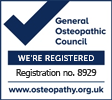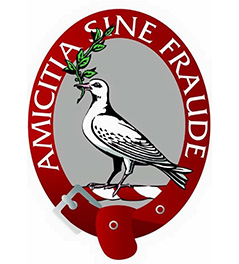So what’s the difference ?
Osteopaths view the body as a unique, interconnected, self-healing system. Osteopathic treatment focuses on correcting disturbances with this system, whether caused (by among many things) muscle weakness/imbalance and/or tension, restricted joint movements, poor posture or working practices. Given that each body is viewed as being unique, treatment is tailored to the individual not the symptom(s).
Osteopathic diagnosis and treatment is around 90% ‘hands-on’. The techniques employed by osteopaths can vary from cranial osteopathic (gentle touch and pressure – see the page on cranial osteopathy for more information), soft tissue techniques such as massage and passive joint movements (where the osteopath initiates and controls the movement) and thrust techniques (such as manipulation – often referred to by patients as ‘cracking’ – which, incidentally, is only the release of a slight vacuum that has built up between two surfaces of a joint). They may also use ultrasound, modern acupuncture,electrical acupuncture & medical cupping and in many cases lifestyle/postural advices, exercises and/or stretches may be given.
Physiotherapists concentrate on restoring optimum function and performance to the problem area. As physiotherapy has been an intrinsic part the NHS for many years, the availability of funding has driven research and enabled studies leading to the development of ‘treatment protocols’ for the treatment of specific problems.
Physiotherapy diagnosis and treatment is less ‘hands-on’ (around 60%) as more focus is given to observing movement and correcting technique. The techniques employed by physiotherapists vary from soft tissue techniques, such as massage and passive joint movements (movements initiated and controlled by the physiotherapist), to more extensive rehabilitation exercise programs. Ultrasound may also be employed.
So who do I see ? Well as the old cliche goes the therapist that “works best for you”
www.rotheryhealth.com


















